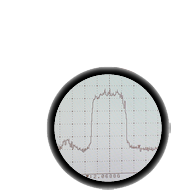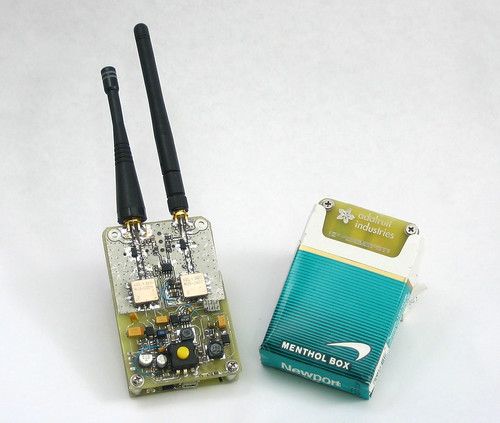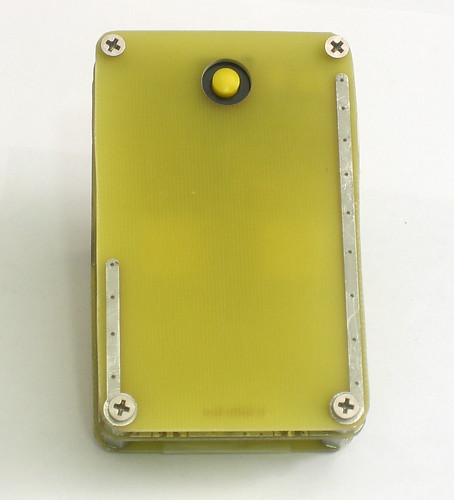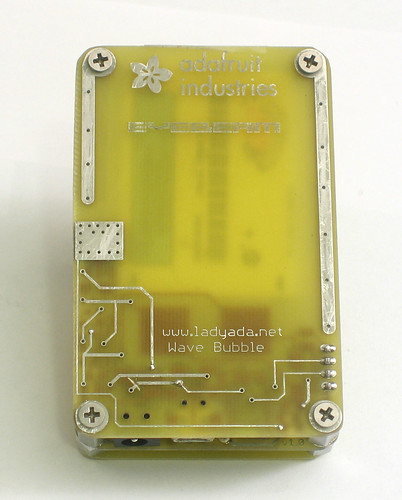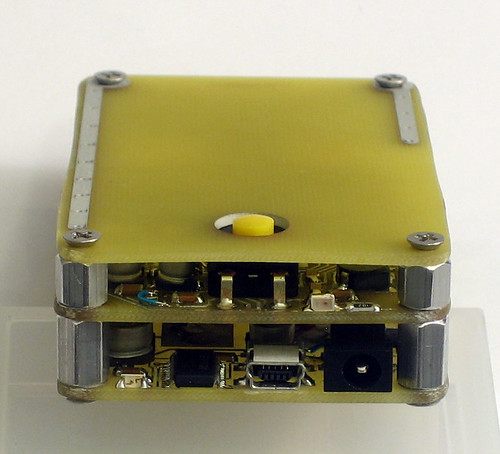Two Wavebubbles. Left is an earlier revision with the top removed and with external antennas. Right is v1.0 with internal antennas, fit into a pack of cigarettes.
This website details the design and construction Wave Bubble: a self-tuning, wide-bandwidth portable RF jammer. The device is lightweight and small for easy camouflaging: it is the size of a pack of cigarettes.
An internal lithium-ion battery provides up to 2 hours of jamming (two bands, such as cell) or 4 hours (single band, such as cordless phone, GPS, WiFi, bluetooth, etc). The battery is rechargeable via a mini-USB connector or 4mm DC jack (a common size). Alternately, 3 AAA batteries may also be used.
Output power is .1W (high bands) and .3W (low bands). Effective range is approximately 20' radius with well-tuned antennas. Less so with the internal antennas or poorly matched antennas.
Self-tuning is provided via dual PLL, therefore, no spectrum analyzer is necessary to build this jammer and a single Wave Bubble can jam many different frequency bands - unlike any other design currently available! To reconfigure the RF bands, simply plug it into the USB port of your PC and type in the new frequencies when prompted. Multiple frequency ranges can be programmed in, each time the device is power cycled it will advance to the next program in memory.
While the documentation here is both accurate and complete (as much as possible), the construction of such a device is still an advanced project. I would not suggest this as even an 'intermediate' skill project, considering the large amount of difficult SMT soldering (multiple TSSOP and SOT chips, 0603 RC's), obscure parts, and equiptment necessary to properly construct and debug.
This design is not for sale or available as a kit and never will be due to FCC regulations. Please do not ask me to assist you in such matters.
All original content for this project is distributed open source under Creative Commons 2.5 Attribution / Share-Alike.
Wave Bubble was developed under support by EYEBEAM during my R&D fellowship at the Open Lab, thanks! |
|---|
 |
Much of the RF gain-stage design and layout was done in collaboration with Adam J. O'Donnell and the Cult of the Dead Cow |
|---|
Original design work was done at MIT Media Lab/Computing Culture as part of my M.Eng thesis and based on the inimitable work at GBPPR.
